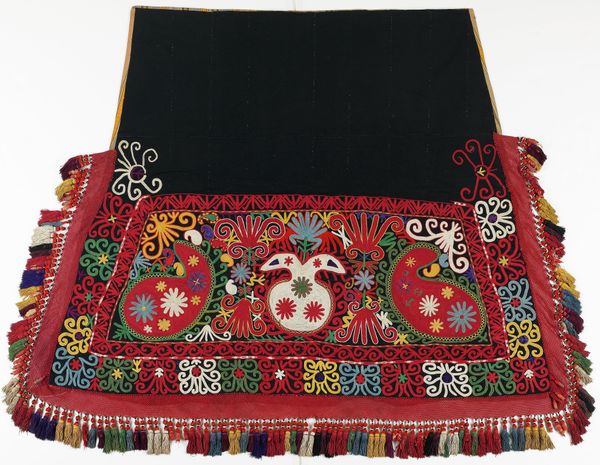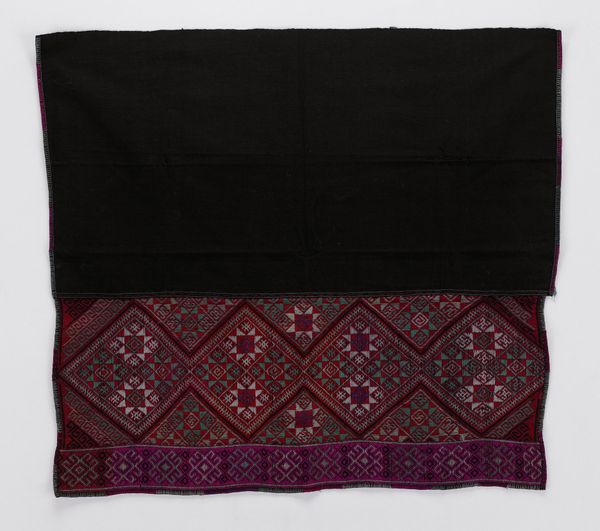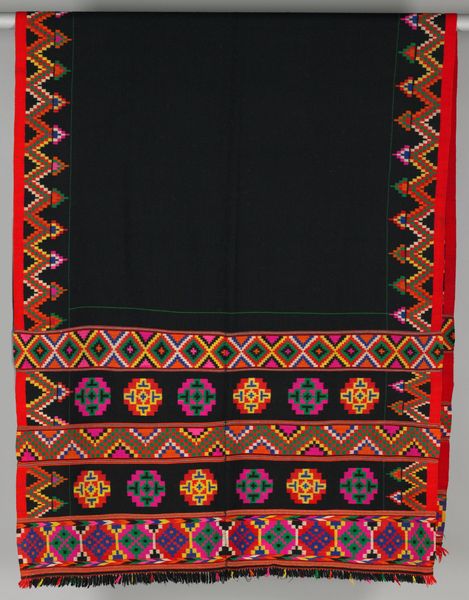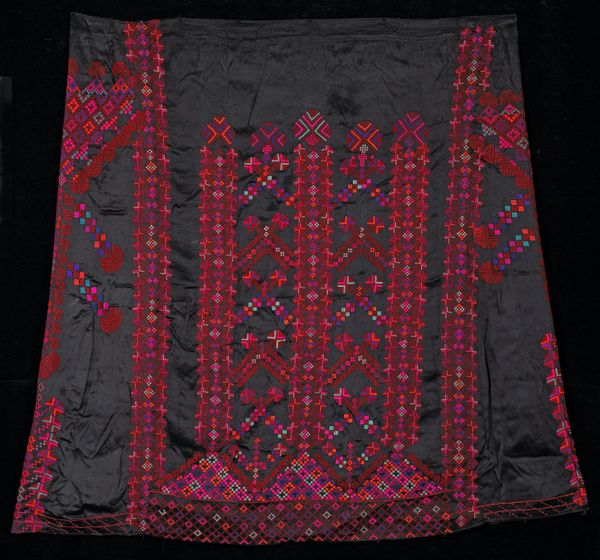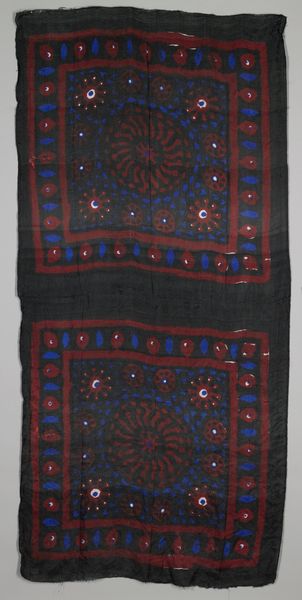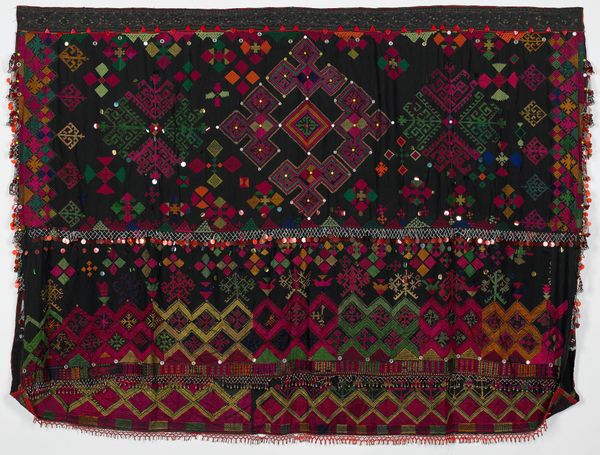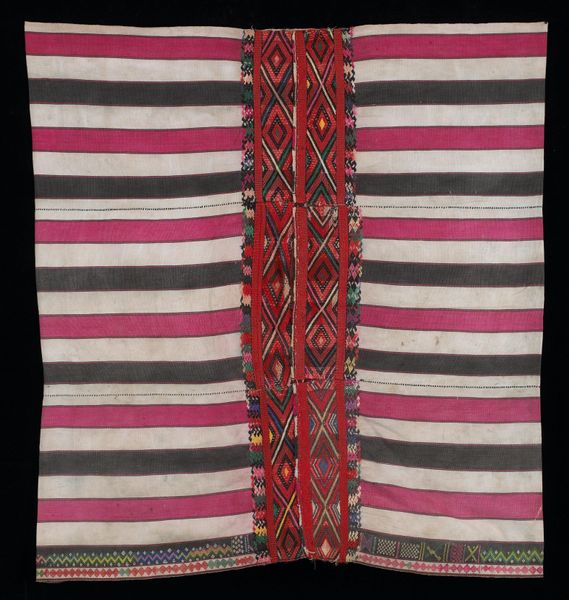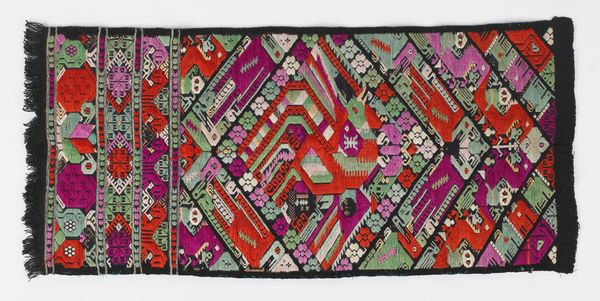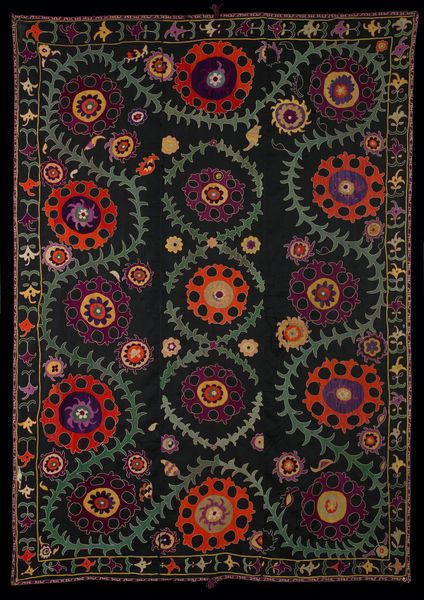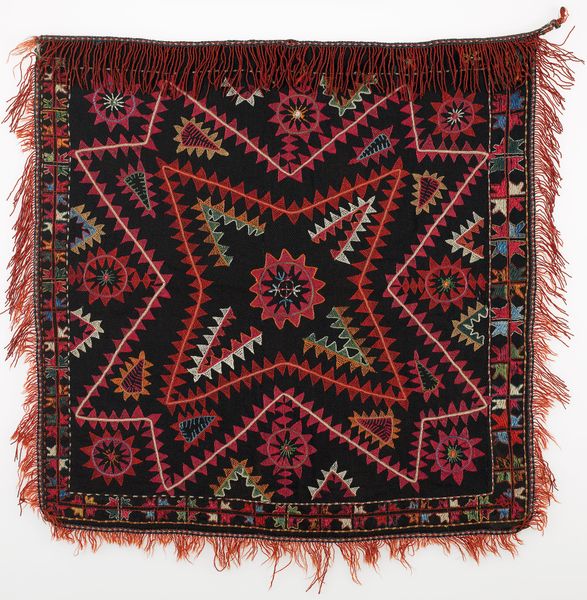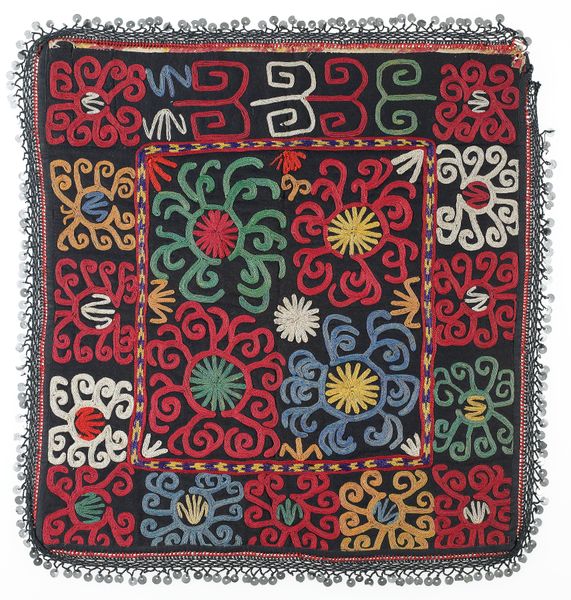
fibre-art, silk, textile
#
pattern heavy
#
pattern-and-decoration
#
natural stone pattern
#
fibre-art
#
silk
#
textile
#
fashion and textile design
#
geometric pattern
#
pattern background
#
pattern design
#
geometric
#
repetition of pattern
#
pattern repetition
#
textile design
#
layered pattern
Copyright: Public Domain
The Da-our is an embroidered textile, likely made by Kungrat people using cotton and silk. The first thing you notice is probably the rich color; the density of the embroidery on the fabric suggests intensive labor. Now imagine the maker carefully guiding the needle, one stitch at a time, through layers of cloth. The materiality of the textile – the way it feels, drapes, and reflects light – all are affected by this process. Textiles have always been central to social life, particularly for women, providing a vital source of income, while also connecting them to wider traditions of creative practice, aesthetics, and cultural identity. And although it is tempting to think of embroidery as a domestic craft, examples like this are an important reminder of the ways that handmade things can have a social and political charge. When we engage with this kind of material, its making, and its context, we can really begin to question the traditional distinctions between fine art and craft.
Comments
No comments
Be the first to comment and join the conversation on the ultimate creative platform.
